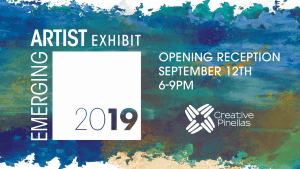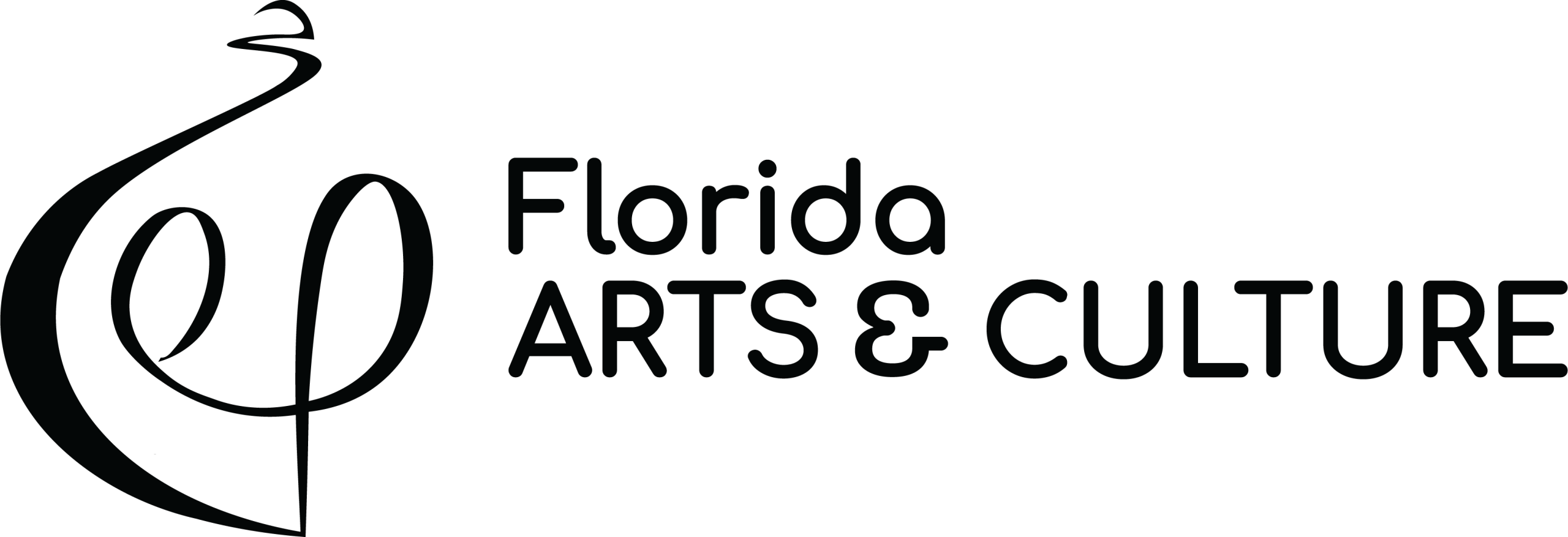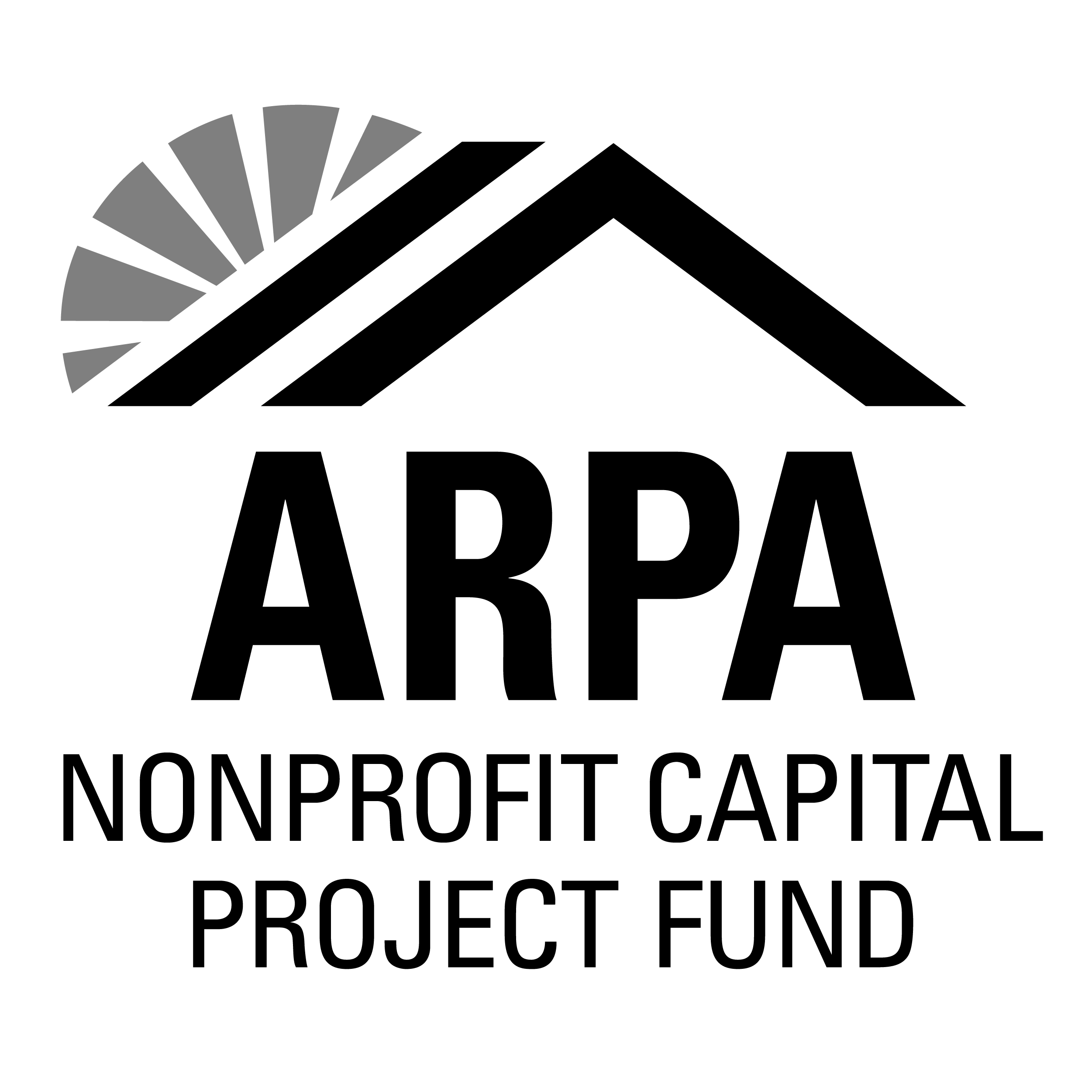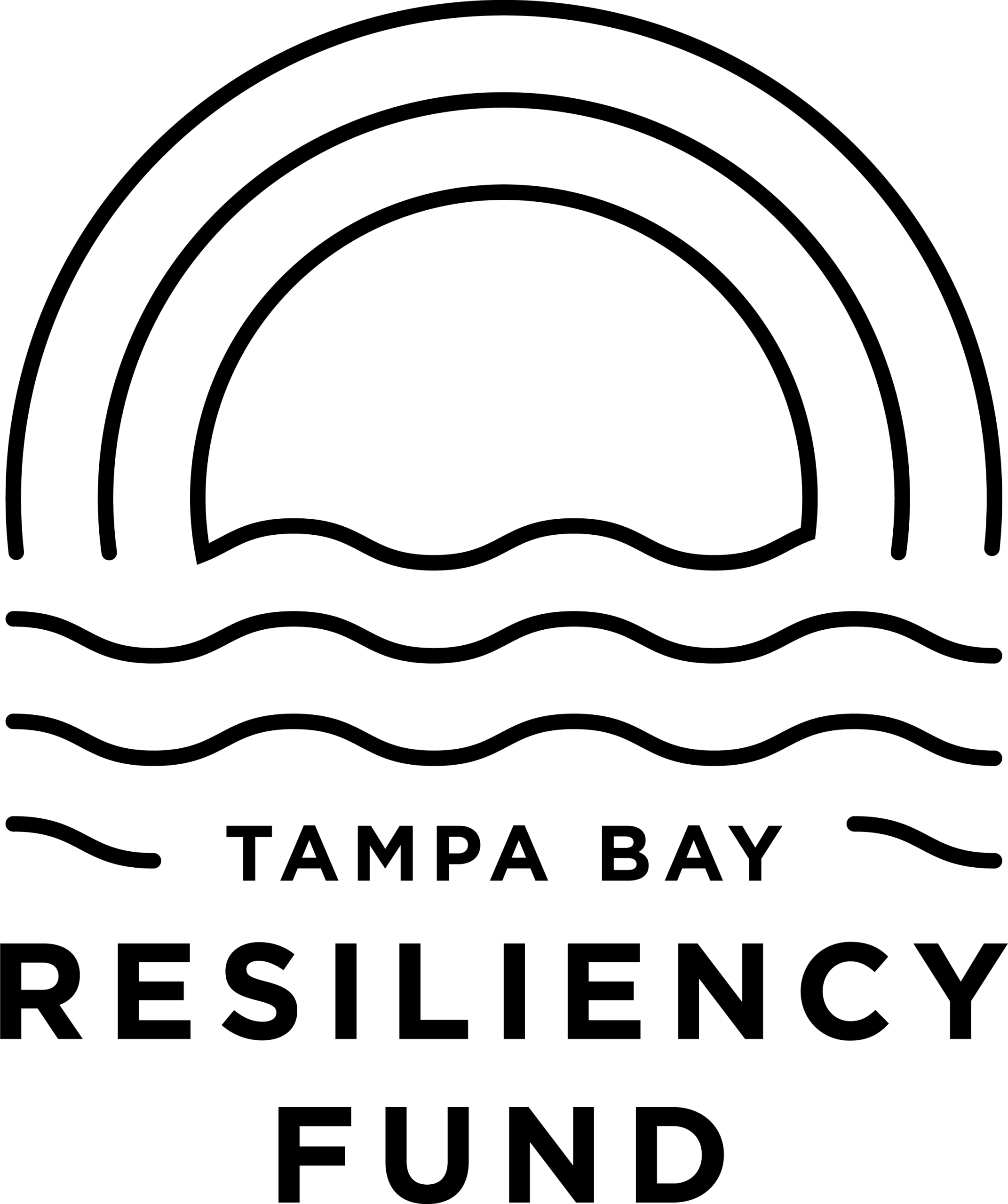September 10, 2019 | By Tiffany Razzano
Emerging Artists and Professional Mentors Reflect on 2019’s Partnerships
The Pinellas County artists selected as Emerging Artist Grantees by Creative Pinellas each year are awarded more than just grant funding. With the honor comes the opportunity to participate in the annual Emerging Artist Exhibit and a mentorship with an established professional artist.
“The mentorship is my favorite (part) and I’ve seen (it) consistently be the most dramatically transformative part of the grant program,” says Danny Olda, Creative Pinellas’ Digital Content Manager.
“The mentors help artists unlock problems they may have been attacking alone for a long time. They guide the Emerging Artists toward exploring what’s important to them, but perhaps in ways they never thought of. And maybe most importantly, they challenge the emerging artists to more fully explore their potential.
“When a mentorship is humming along, I feel like you can almost watch the artist as they break through into a new space in their career.”
The Arts Coast Journal reached out to this year’s Emerging Artists and Mentors to learn about their partnerships and their art.
Find out more
about the Creative Pinellas 2019
2019 Emerging Artists Exhibit
Anna Ayres
Mentored by Carrie Jadus
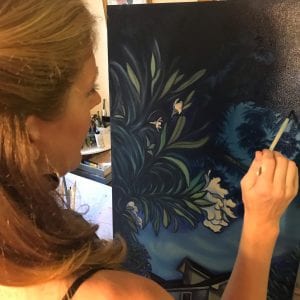
Anna Ayres: I’ve always felt like an artist, sensitive and in tune with my emotions and the connection we have to the natural world. This is where my art began.
. . . Over the years, my artistic career has meandered in and out of the more practical path, but has always been there. I graduated in 2004, and ever since, painting is a constant. I am continually called to it, trying new things and always developing my artistic skills. Acrylic painting turned into a deep love for oils a handful of years ago. I also do illustrative work in watercolor, which I began exploring a couple of years ago. As artists, we try different things and it’s in the trying that we start to see what’s possible.
CP: What have you been working on since being selected as an Emerging Artist?
AA: For years, I’ve been saying to myself and out loud, “I just want to paint big skies and clouds.” I also love the botanical life and birds here in Florida. I believe birds and trees directly connect us to our greater sense of well-being and safety. If the birds are happy, the Earth is healthy and thriving. It’s a primal connection. So I’m really focused on the act of oil painting: creating all those ideas and inspiration from birds, botanicals, air and water that are waiting to be brought to life on the canvas.
CP: What has your relationship with your mentor been like?
AA: Absolutely outstanding. What a blessing! She’s taught me so much about what it means to be a professional artist in such a short amount of time. Through her, I am offered confirmation to let go of my fears in order to really achieve what it is I believe I can. Carrie validates all the hard work I’ve done so far, and exemplifies the kind of life I’m in the midst of creating. . . This relationship takes me beyond what my imagination can conjure up and shows me what’s possible and how I’m going to move forward. It has provided me with the confidence to take the next steps in my career.
CP: When you meet, what types of things do you work on?
AA: We’ve had such a broad range of experiences together, as an artistic career is all-inclusive. It covers all aspects of one’s being, not just a single compartment or two.
I absolutely love reading books about creativity, belief systems, self-improvement etc., as does Carrie. . . Most recently she gave me a copy of Art & Fear by David Bayles and Ted Orland. We painted together, which I wrote a blog about as it was a hugely pivotal experience for me. We discuss tools, techniques, methods, where to spend money, as well as personal matters and how they can affect focus and direction. Next we’ll be photographing the work I’ve made for the Emerging Artist show and compiling a portfolio booklet I can approach galleries with.
CP: What have you learned from her?
AA: The overriding takeaway for me is that it is time to prioritize painting in my life. If I choose to pursue an artistic career, it’s simply a matter of staying focused, shedding the self-doubt of my inner critic and allowing myself to paint. A lot. There is no longer room for the debilitating voice of perfectionism. There is only space for showing up to the easel and doing my best in each moment, doing what I love to do.
Explore Anna Ayres work here
Carrie Jadus
Mentor to Anna Ayres

Carrie Jadus: I am a professional oil painter that resides in the St. Petersburg area. I grew up in the Tampa Bay area and I went to Gibbs High School as part of the Pinellas County Center for the Arts magnet program in St. Petersburg. I have an engineering degree from USF and worked as an engineer many years ago, but have been successfully working as a full-time fine artist since 2006.
CP: Have you ever mentored another artist before?
CJ: Yes, I have had the opportunity to mentor several young artists who have approached me over the years, primarily through our intern position at Soft Water Studios (and) twice through (the) Creative Pinellas mentee program.
CP: What has your relationship with your mentee been like?
CJ: It has been very fulfilling and I feel like my mentee, Anna Ayres, and I connect on many levels. I knew after reading her first blog that she and I had a lot in common and that it would be a good fit to work together.
CP: When you meet, what types of things do you work on?
CJ: We have primarily talked about setting goals, painting techniques, and overcoming struggles of the financial aspect of creating art for a living.
CP: What do you hope is the most important thing Anna took away from her time working with you?
CJ: I think that Anna is extremely talented and capable, but maybe is just lacking the confidence and faith to know that her dreams and desires to be a full-time artist are possible. I hope that I have been able to help provide her with tools she can use to move forward and continue to instill confidence and faith as she moves in that direction.
CP: Have you seen any changes to her work or approach to art since you started working with her?
CJ: Yes, I think Anna has been spending more time and energy on creating a larger body of work and we have talked about the importance of practice and setting aside fear and doubt while creating.
CP: How has this mentorship influenced your own work as an artist?
CJ: Making a living as an artist and balancing all the details of a creative career can be a serious challenge that is a test of faith in many ways. I think when someone who is financially succeeding as an artist and is able to share some of their own challenging moments with artists who are early in their careers, it helps to provide them with faith that they can overcome similar obstacles.
Explore Carrie Jadus’s work here
Laura Spencer
Mentored by Chad Mize

Laura Spencer: I am an illustrator and graphic designer, born and raised right here in St. Petersburg, Florida.
Starting at a young age, I began studying fine art under the tutelage of my aunt [artist Boo Ehrsam]. Then I attended the art magnet program (at the) Pinellas County Center for the Arts at Gibbs High School. These years were some of my most formative and foundational – both personally and artistically. After high school, I attended Ringling College of Art + Design, graduating in 2007 with a BFA in illustration.
In my professional career, I’ve always maintained a full-time job while taking on freelance projects as well as personal artistic endeavors. Day jobs have included everything from slinging scoops of ice cream to selling and consulting over fine art supplies.
Now, I work for a design, build (and) install firm, Creative Arts Unlimited, Inc., where I am fortunate to design and illustrate… daily. Primarily, I focus my skills on illustration, however there are far more opportunities in the graphic design realm. In fact, most of my design experience has been learned through the trials and tribulations of freelance work.
Recent projects have been heavily focused on storytelling by way of illustration, concept and design.
CP: What have you been working on since being selected as an Emerging Artist?
LS: Since receiving the Emerging Artist Grant, I am focusing my attention on two specific aspects of my artistic career.
First, it was necessary to create a series of work specifically for this (Emerging Artists) Grant Exhibition. Since I am usually beholden to creative work for my employer, as well as freelance projects, (and I work A LOT, but hey, a girl has got to eat… and pay down them student loans) it only seemed natural to use this money as an opportunity to create something for myself and of myself.
My portion of the exhibit is entitled, When Never Die, We Simply Change Form, and it is based on creating ephemeral effigies for my three grandmothers. The colors and imagery all have sacred meaning to me.
I am also very interested in the origins of psychedelia and visionary art. It is a goal of mine to create works that feel ethereal and otherworldly, that invite the viewer to take a trip into their own subconscious, and hopefully evoke some sense of awe and connectivity.
The other aspect of this grant is to create a new brand identity for myself. Although my parents lovingly gave me my name, “Laura Spencer” is rather common. In fact, it is the name of not only a famous actor, but also another visual artist (very talented, and out of the UK). Therefore, my old moniker “Laura Spencer Illustrates” – in all its cumbersome length – becomes ever-further buried in endless search engine pages and social media hashtags.
My new brand – which I will announce to you first, right now – is Miss Crit. This will be the face of my illustration and design aesthetic. Business cards are being printed, a new Instagram page has been made and I’m ready to move forward with a clean, thoughtful and cohesive visual personality.
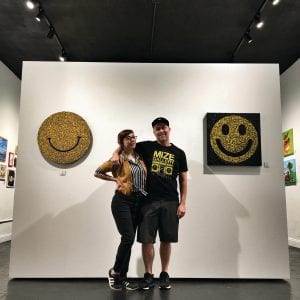
CP: What has your relationship with your mentor been like?
LS: My mentor for the Emerging Artist Grant is Chad Mize – a multimedia designer, artist, and gallerist here in St. Petersburg, Florida. I have known Chad for many years, as he gave me a major opportunity in my fledgling career. Chizzy showcased a piece of mine in the exhibit Bitchin’ at BlueLucy Gallery in 2011. [That is, the BlueLucy of original 600 Block infamy – on Central Avenue in downtown St. Pete].
This exhibit was my first public showing – post-college graduation – and my first exhibit as a newly minted “professional.” Since then, I’ve considered Chad not only an artist I greatly admire, but also a colleague and friend.
Chizzy is an ideal mentor. He has helped me to narrow my focus and determine what direction I want to take my career. Because he has so much experience as a designer, marketer and artist, he’s helped to guide and steer my objectives onto a much clearer path.
The development of a new brand was his first assignment for me. I’ve also gotten to glimpse aspects of his own design philosophy and work ethic. This has been the most invaluable aspect of the Emerging Artist Grant experience.
CP: What have you learned from him?
LS: I am learning so much! . . . I’ve gotten to imbibe a bit of knowledge on how a gallery space functions successfully. We’ve also focused a lot on the importance of developing a clear vision as a designer. There are so many avenues to explore within an art career – and I want to try them all!
But success comes from creating a simplified, strong, united message. Under his guidance, I’m learning to build a brand, create an LLC, and how to make my business practices feel more legitimate (with plenty of room to grow). We’ve talked about effective marketing strategies too – again keeping it focused and simple (i.e. he primarily uses Instagram, rather than spreading time and energy across various platforms.)
Another key lesson in our meetings has been about authenticity. Staying true to me, the artwork I inherently make, and the personality I share with the world is the cornerstone of establishing an authentic identity. Even the new name – Miss Crit – derives from my nickname, so there’s a backstory and legacy already woven into its fibers, just like his epithet, Chizzy.
We’ve also talked at length about finding your niche – an audience that is true to you. With his infamous World Tour Tees (the Paris, London Tokyo, St. Pete graphic), as well as his reimaging of the “Mr. Sun” icon, Chad has embroiled himself as an ambassador of St. Pete culture (couture, if you will).
This market discovery comes with time, and most importantly, with a body of work to release out onto the world. Now that I’ve created some pieces, it’s time to combine all these lessons and venture out into the wide world to find my audience.
CP: How has this mentorship impacted your art?
LS: This mentorship has helped to refine my art, as well as stimulate my design senses. Receiving objective and constructive critiques has been so refreshing – something greatly lacking in my art since graduating college. It’s also helped me to be accountable and timely, as well as elevating the craftsmanship I put into proofs and presentation.
Having to articulate my design choices has impacted the creative decisions I make back in the studio. Hearing objective and critical opinion on those designs has helped me to better edit and has offered valuable insight on how others perceive my intention.
CP: Has the relationship influenced you in ways you didn’t expect?
LS: Yes! What has been most unexpected is the ways in which our conversations have impacted all aspects of my life – not just art and design related.
Each session our talks always wander into philosophical design concepts that influence the way in which I perceive and function in the world. Like I mentioned before, the notion of authenticity in design has transformed the little decisions and interactions I have with people in daily life.
It’s important to take small moments, pause, and ask, “Is this direction aligned with my goals – with who and what I am?”
Explore Laura Spencer’s work here
Chad Mize
Mentor to Laura Spencer
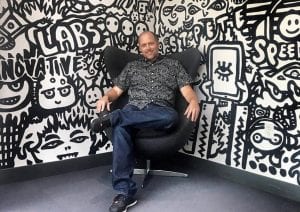
Chad Mize: I am a multimedia artist and designer. Have been self-employed since 2001. Specialize in apparel and brand design, fine art, gallery curation and murals.
CP: Have you ever mentored another artist before?
CM: No, I have not mentored an artist before.
CP: What has your relationship with your mentee been like?
CM: We have known each other for over eight years. Laura was in one of my first exhibits at Bluely Gallery, Bitchin’, (an) all-female exhibit in 2011.
CP: When you meet, what types of things do you work on?
CM: We did a lot (of) discussions on branding, products, future goals.
CP: What do you hope is the most important thing she took away from her time working with you?
CM: Hopefully the aspects of branding yourself and what to do and what not to do.
CP: Have you seen any changes to her work or approach to art since you started working with her?
CM: Laura established a brand name she will be presenting in the coming months. She is very receptive and takes lots of notes!
CP: How has this mentorship influenced your own work as an artist?
CM: It’s nice to share what you have learned and pass that info on to others. I feel good to release this knowledge and hope it helps Laura with her future endeavors.
Explore Chad Mize’s work here
Lisa Rowan
Mentored by Gianna Russo

Lisa Rowan: I’ve been writing for various publications since I was 16, starting at my local weekly newspaper. I’ve mostly been a nonfiction writer, focusing on reporting, personal essays and service journalism.
But more recently I’ve been interested in doing more with fiction, especially lyric fiction and work that combines elements of poetry and prose. So much of nonfiction writing is about creating a narrative around characters or events that fosters emotional investment for the reader, and I aspire to take that skill over (to) fiction writing.
CP: What have you been working on since being selected as an Emerging Artist?
LR: I applied for this grant with an excerpt of a novel I’ve been working on since fall 2017, Sea Level. I proposed a work plan of fleshing out and refining the first of the book’s three portions.
Since receiving this grant, I’ve nearly doubled the number of pages in the first section of the book. Instead of doing a reading at our group exhibition, I’ll be presenting a video. I’m recording a chapter, audio-book style and will be presenting it with underwater imagery my friend (and) colleague Heather Comparetto is assisting me in creating.
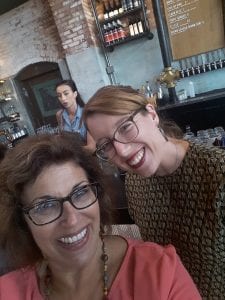
CP: What has your relationship with your mentor been like?
LR: It’s hard to put it into words! Gianna acts like a mentor, tutor, friend, cheerleader and aunt all rolled into one. She understands the limitations of my daily life (as I have a full-time job, a small business and freelance obligations alongside this grant), but still pushes me to work toward goals in small, tangible ways.
CP: When you meet, what types of things do you work on?
LR: She spends a lot of time telling me to calm down. Which I often need. We spend time discussing my project’s plot and characters, which helps me formulate my ideas and get a gut check about how well I’ve created this world for my characters to inhabit.
We talk about managing my time and the wacky schedules writers maintain. Sometimes we talk about what’s happening in Florida or aspects of books we’ve read, just for idea generation and discussion.
CP: What have you learned from her?
LR: That writing is a way of life, not just a career. Slow progress is better than no progress. Goals evolve, as do the paths we take to achieve them. And I’ve learned to have more confidence in my writing and my progress. I’m already doing the work, as Gianna has reminded me.
CP: How has this mentorship impacted your art?
LR: I have a renewed faith in this particular project. When I applied for this grant I wasn’t entirely convinced I was cut out to write fiction. “It’s maybe a novel,” I would tell people, or “It’s a novel-length fiction project. Maybe a novella.” Now, I can say, “I’m working on a novel” with conviction. . .
CP: Has the relationship influenced you in ways you didn’t expect?
LR: I wasn’t expecting my mentor to be so open, engaging and invested in my development and well-being beyond my art. Gianna feels like a friend and mentor I’ve known for years, rather than one I met for the first time in June.
Explore Lisa Rowan’s work here
Gianna Russo
Mentor to Lisa Rowan
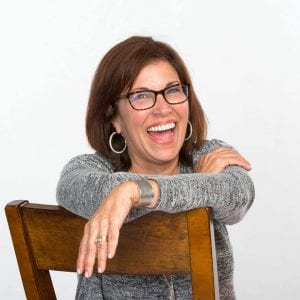 Gianna Russo: I’m the author of the poetry collections, One House Down (Madville Publishing, 2019); Moonflower, winner of a Florida Book Award; and two chapbooks, Blue Slumber and The Companion of Joy.
Gianna Russo: I’m the author of the poetry collections, One House Down (Madville Publishing, 2019); Moonflower, winner of a Florida Book Award; and two chapbooks, Blue Slumber and The Companion of Joy.
I’m founding editor of YellowJacket Press (and) was named Creative Loafing’s Best of the Bay Local Poet in 2017. I hold an MFA in poetry from the University of Tampa and am Assistant Professor of English and Creative Writing at Saint Leo University, where I teach in both the undergraduate and graduate programs and serve as editor-in-chief of Sandhill Review and director of the Sandhill Writers Retreat.
CP: Have you ever mentored another artist before?
GR: Yes, other local poets and lots of budding writers that I’ve mentored throughout my teaching career.
CP: What has your relationship with your mentee been like?
GR: Wonderful! Lisa and I hit it off immediately. We both have tons of enthusiasm, a passion for craft, and a desire to be the best writers we can be. Plus, (we’re) both smart as hell.
CP: When you meet, what types of things do you work on?
GR: We’ve talked about her work quite a bit, but also the writing process and the writing life. For instance, how valuable is it just to stare at the rain? When you’re writing an apocalyptic novel about flooding, for Lisa it is invaluable!
CP: What do you hope is the most important thing she took away from her time working with you?
GR: This is a hard one, because Lisa already has a lot in the bag. But the most important quality we writers can have is perseverance. So, I hope I impart that to her.
CP: Have you seen any changes to her work or approach to art since you started working with her?
GR: Yes. One thing I’ve encouraged Lisa to do is make whatever she is already doing work for what she needs. In other words, don’t reinvent the wheel unnecessarily.
She’s told me she’s taken pieces of her writing that aren’t quite there yet and tucked them away for possible later use. That’s one way to conquer work load and to work smart.
CP: How has this mentorship influenced your own work as an artist?
GR: Meeting with Lisa has made me call out myself and say, “Hey, you need to be writing.”
When we first met, I was in a slump and I couldn’t bear the thought of seeming to be a fraud or hypocrite. Now, as we head into the home stretch, I’m not only writing, but I’m about to undertake a poetry challenge. That will get the juices flowing. Thanks, Lisa!
Explore Gianna Russo’s work here
Javier T. Dones
Mentored by Denis Gaston
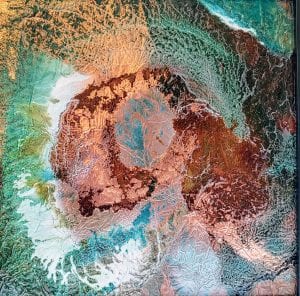
Javier T. Dones: My medium is metals and chemistry processes. Coloration, patinas and textures are created by the controlled application of chemistry processes on copper and other metals. Other techniques incorporate powdered metals, natural/element pigments, enamels and resins.
CP: What have you been working on since being selected as an Emerging Artist?
JTD: I have been working on the production of three large profile pieces for our Emerging Artists Exhibition. They are three 10 feet by 32 inches pieces I am calling The Towers. Spectacular fumed copper pieces that symbolize our primordial values. Tower of Light: Wisdom, Tower of Spirit: Harmon, and Tower of Fire: Faith.
CP: What has your relationship with your mentor been like?
JTD: I love my mentor. The pairing of our “introvert” personalities is perfect. We can talk about how to overcome our natural disposition to be able to express not only by our artwork but to our audience. To apply our pragmatic approach to our working habits (while) at the same time touching your client with the expression of our emotions translated into our artwork. To make yourself visible and expose your art to the people by applying to shows and (going) out of my comfort zone.
CP: When you meet, what types of things do you work on?
JTD: We talk about how to make my work more visible to my audience and clients. We explore and share resources to progress my trade. We also discuss work ethics, techniques and motivation.
CP: What have you learned from him?
JTD: I feel much more confident to advance at a faster pace to my artistic career goals.
Just to hear from a respected professional the coveted words, “You are ready,” it has jump started a new and energetic phase in my artistic development.
CP: Has the relationship influenced you in ways you didn’t expect?
JTD: Yes. When I lost my previous art mentor, Jack Lebowitz, whom I honor in my art legal presence as Dones & Lebowitz Copper Art, LLC, I thought I did not need any more mentors. Yet, developing an artistic mentorship relationship with Denis Gaston has impacted me and (taught) me that in our art journey we are forever learning new techniques, inspired to take different approaches and (motivated to tackle) new ventures (even) when you think you are burned out or done… You can share and inspire each other.
Explore Javier T. Dones work here
Denis Gaston
Mentor to Javier T. Dones
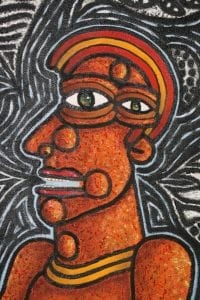
Denis Gaston: I’m a lifelong artist with a degree in graphic design from the University of Florida. After 18 years in that field, I switched to fine art and have maintained an active art studio in Dunedin and now Clearwater for 35 years.
CP: Have you ever mentored another artist before?
DG: Not active mentoring, but one-on-one teaching and inspirational mentoring over the years. I’ve met artists who have told me I was an inspiration to them years before as students.
CP: What has your relationship with your mentee been like?
DG: Co-inspirational. We have learned from each other. I’ve been impressed with Javier’s commitment to creativity in whatever he is doing.
CP: When you meet, what types of things do you work on?
DG: We shared knowledge and Javier explained his unique process of working with copper. I shared different venues that he could pursue to get his art in front of more people.
CP: What do you hope is the most important thing your mentee took away from their time working with you?
DG: Keep making art, no matter what.
CP: How has this mentorship influenced your own work as an artist?
DG: It has inspired me to get back in the studio and make more art.
Explore Denis Gaston’s work here
Marlene Rose
Mentor to Christina Bertsos

Marlene Rose: I studied at Tulane (University) from 1988 to 1990. I learned the techniques I use for sand casting glass in 1989. My professor was Gene Koss, a renowned sculptor. Casting metal in sand has, of course, been done for thousands of years. Sand casting glass was done in Egypt and Mesopotamia, also thousands of years ago, but on a very small scale and then the technology was lost. In the 1970s and 1980s, it was rediscovered and used in an industrial setting in Sweden. My professor found it in the 1980’s and taught it to me in 1989.
CP: Have you ever mentored another artist before?
MR: Yes, I have given numerous talks to groups and helped a number of artists one-on-one over the years.
Most recently, I have been working with a very talented stone sculptor, Christina Bertsos, whom I met through the Creative Pinellas mentoring program. . . Christina has been an absolute gem. Although we work in different mediums, it has been a perfect fit, as we have a very similar aesthetic point of view.
CP: When you meet, what types of things do you work on?
MR: We have discussed everything from artist goals to the nuts and bolts of going about achieving them.
Most artists know how to do art, but have little idea of what to do with it. Marketing, promotion, sales and all those things are vital to know if any artist wants to move their work out of their studio and into the world.
CP: Have you seen any changes to her work or approach to art since you started working with her?
MR: I have, to the business side of things. How to price her work and options to market the work.
CP: What do you hope is the most important thing Christina took away from her time working with you?
MR: That she can make a living as an artist.
Explore Marlene Rose’s work here
Mark Aeling
Mentor to George Retkes

Mark Aeling: I have been making a living making things for over 30 years now. Much of my work revolves around large-scale public art and private commissioned sculpture. I also have a body of work that is more human-scaled sculpture that is driven by my love of making. It revolves around the exploration of materials and how they influence concept and form.
CP: Have you ever mentored another artist before?
MA: Yes. I have been employing young artists for many years and training them in the processes of making sculpture. That would be a form of mentoring. I have also had a number of interns throughout the years and had a program set up with the sculpture department at my alma mater, Washington University in Saint Louis.
CP: What has your relationship with your mentee been like?
MA: I have known George for many years, since he began working for me four or five years ago. This mentorship has given us the opportunity to get to know each other in a different way. We have engaged in a deeper level of conversation about art and business and life goals.
CP: When you meet, what types of things do you work on?
MA: At our first meeting, we set up an outline that covered a variety of topics from a one-year, five-year and 10-year plan. Goals for the body of work for the grant period. Exercises for inspiring the creative process. Looking at art as a business, which involves assessing streams of revenue, understanding third party sales and commissioned work. Contracts, liability and risk. Networking, and lastly work review and studio visit
Every visit has been about 1.5 to 2 hours and we have made sure to touch on all of the topics listed in the outline.
CP: What do you hope is the most important thing he took away from his time working with you?
MA: Identifying goals and setting processes in place to achieve them. Being proactive.
CP: Have you seen any changes to George’s work or his approach to art since you started working with him?
MA: George has been working on a series of pieces that are very exciting to see. To see these pieces evolve from conversation to concept to executed work has been inspiring.
CP: How has this mentorship influenced your own work as an artist?
MA: After our discussions, I have felt invigorated by the depth of our communication and it has inspired me to share more of my creative and professional intent with my team. I think it has made them feel more connected to the process.
Explore Mark Aeling’s work here
